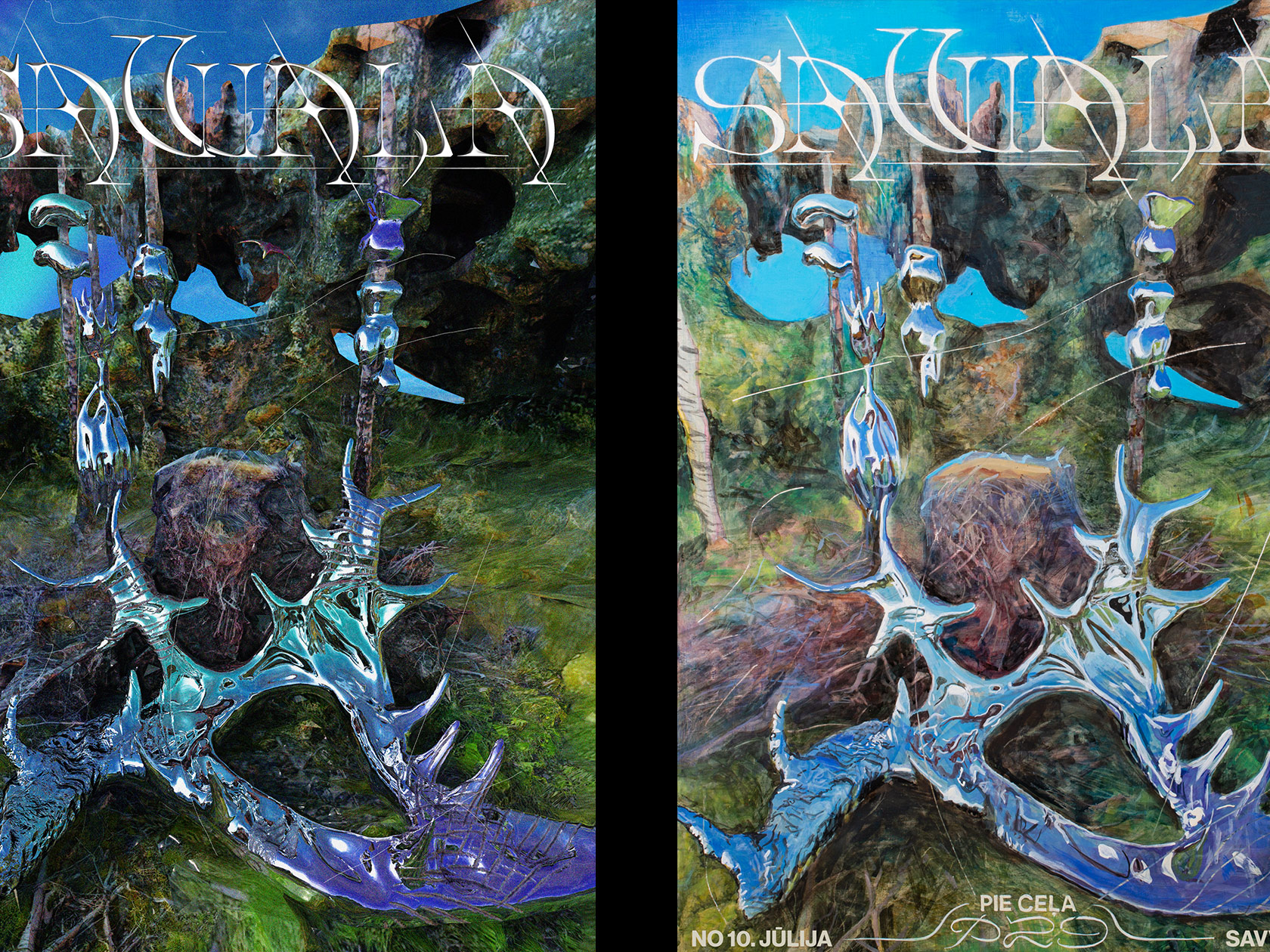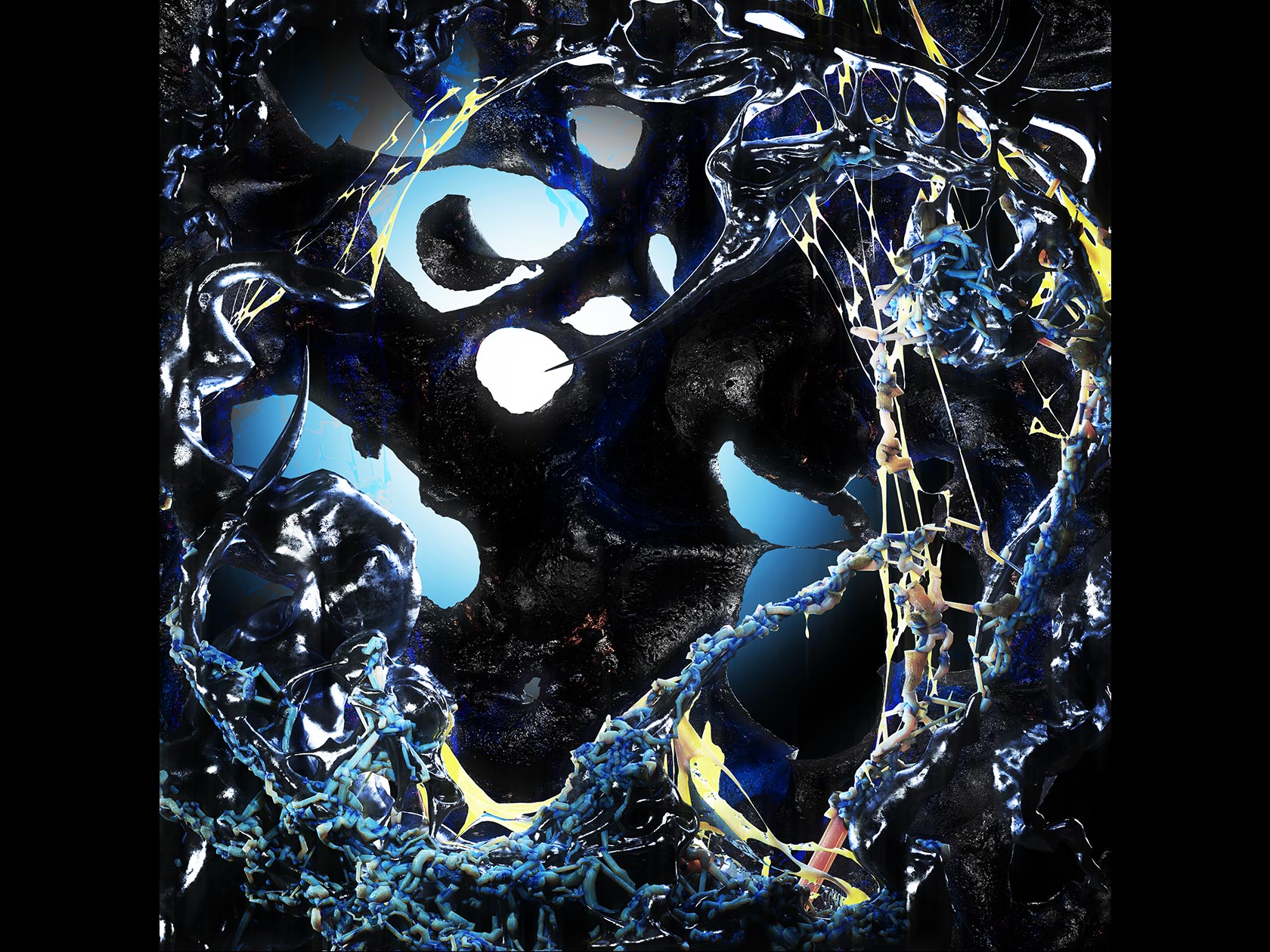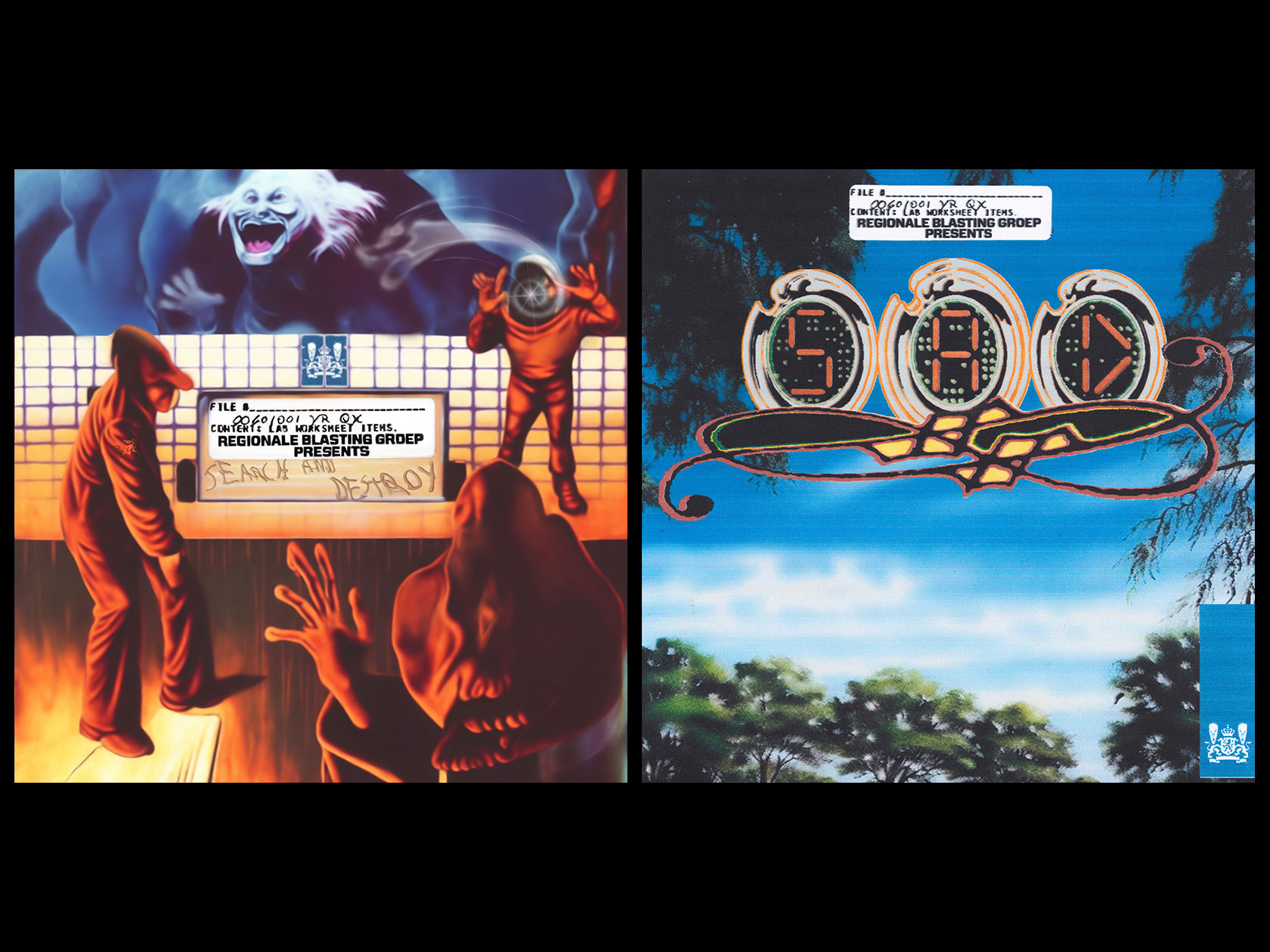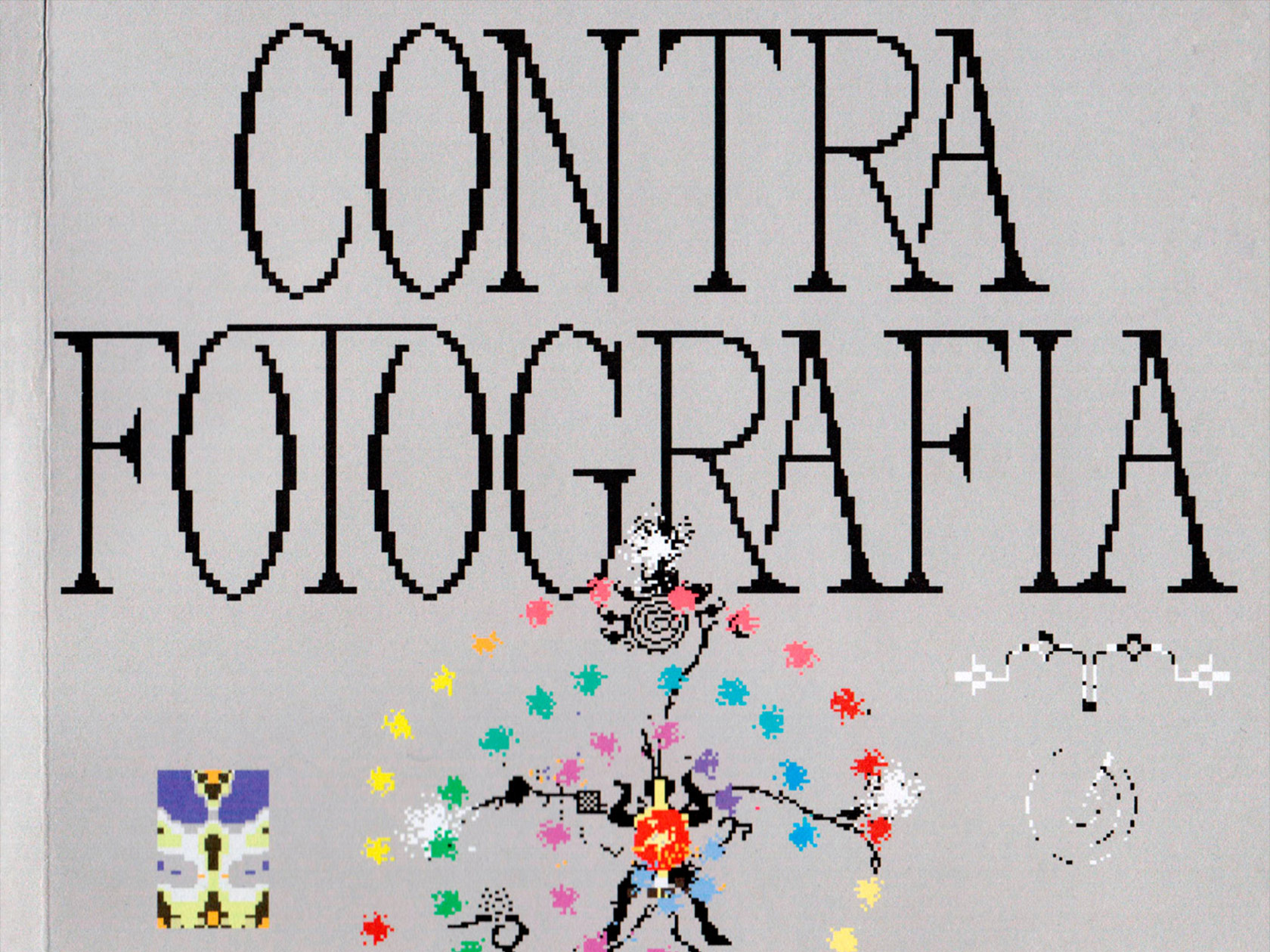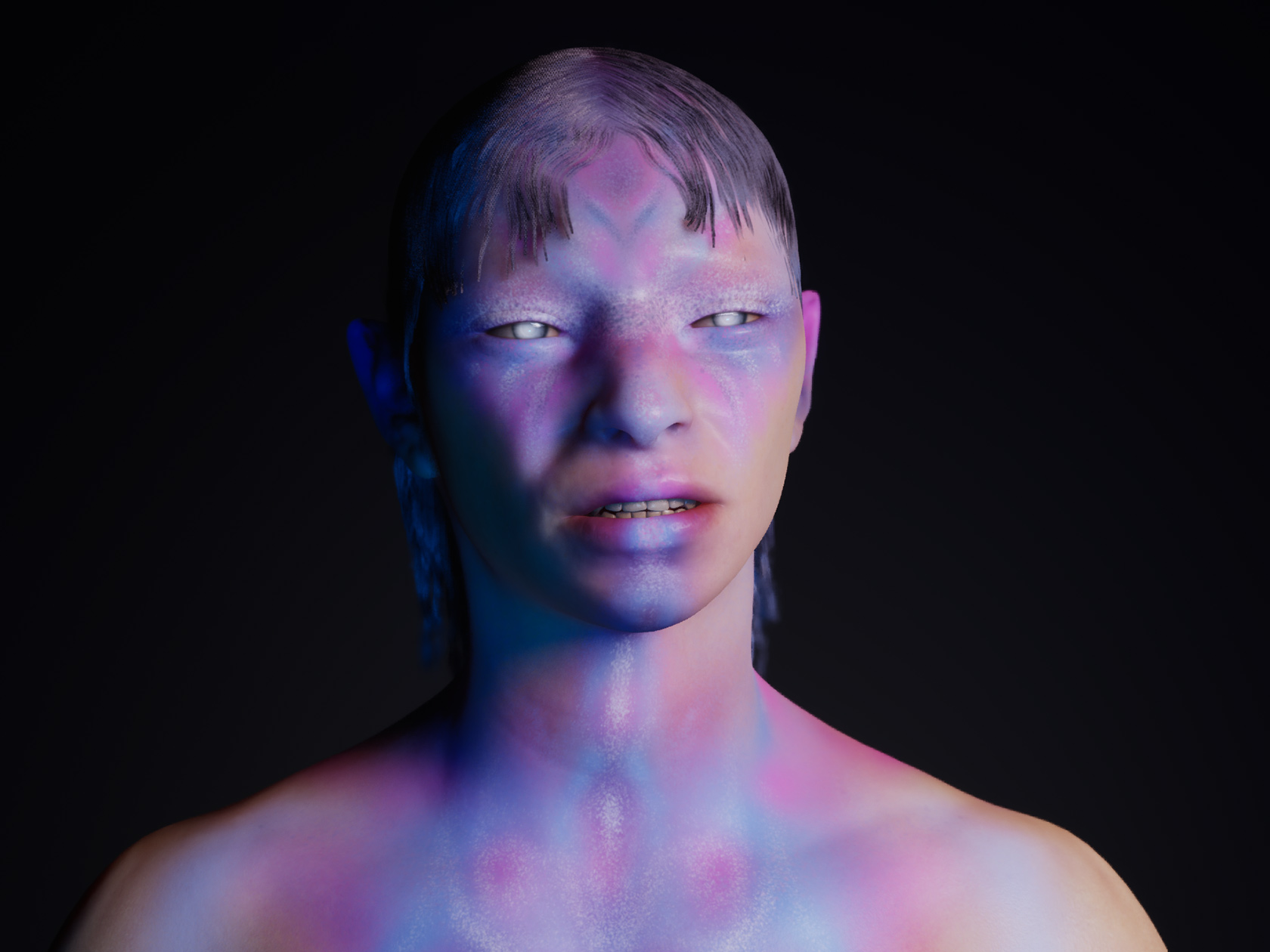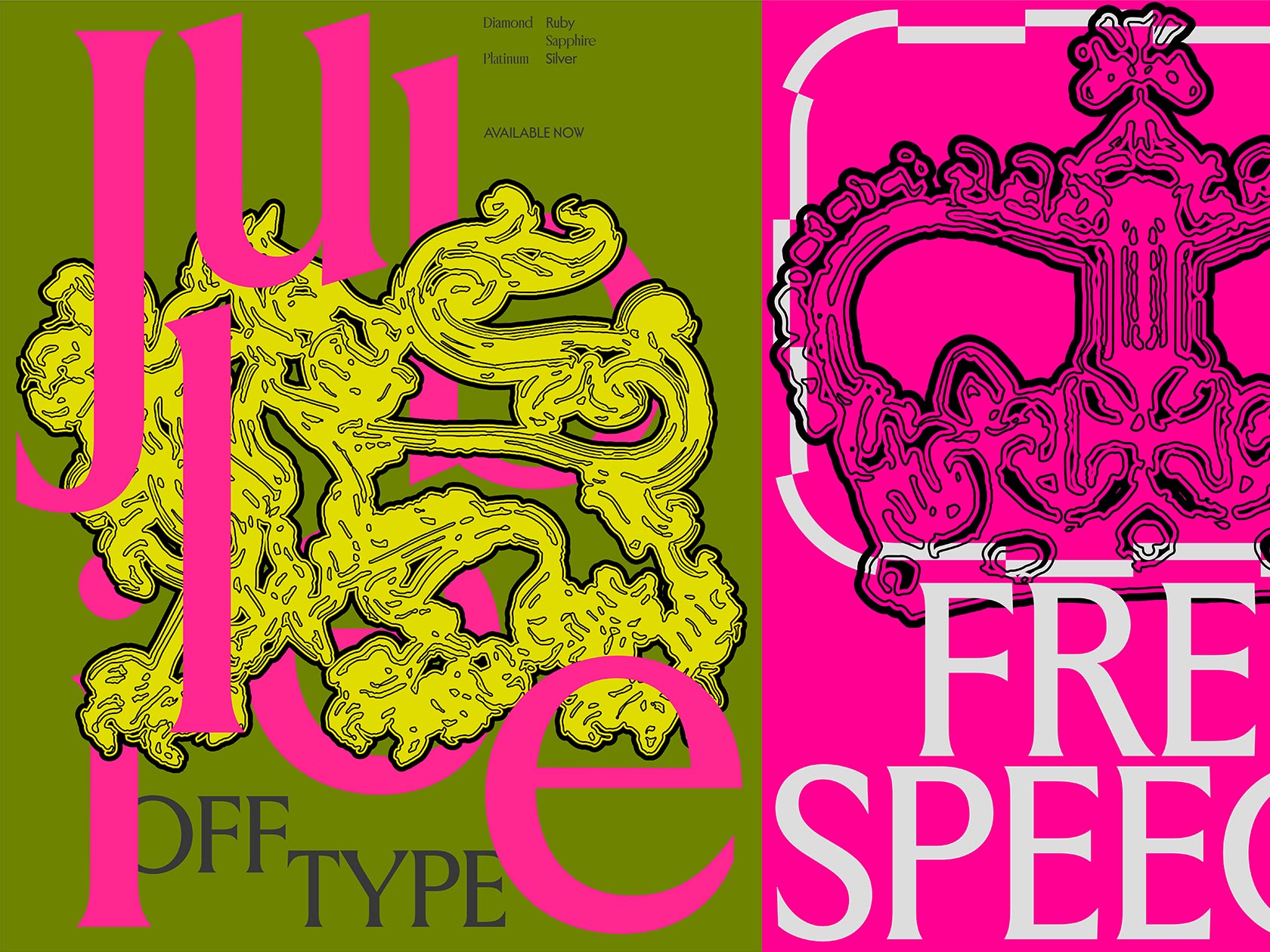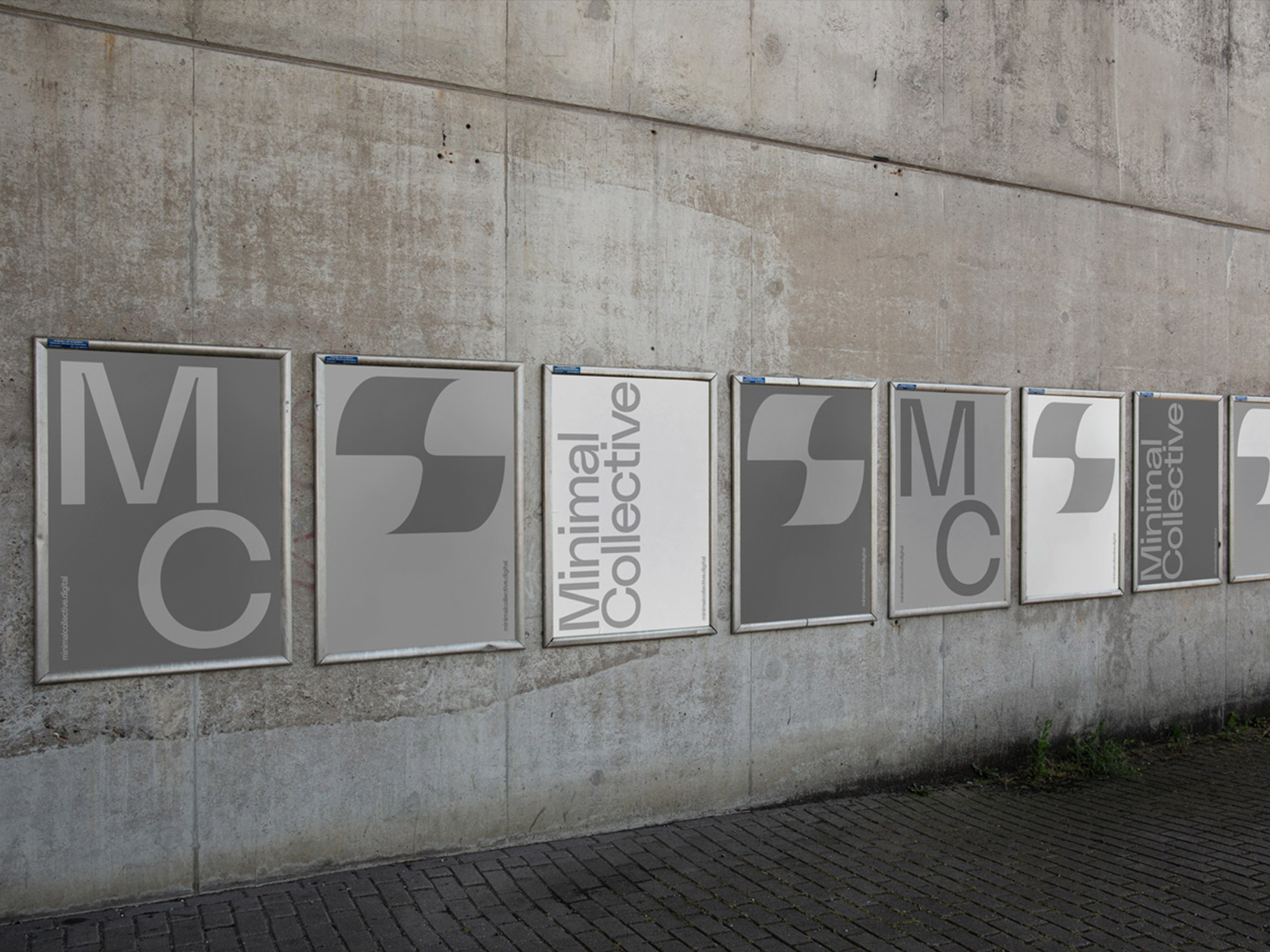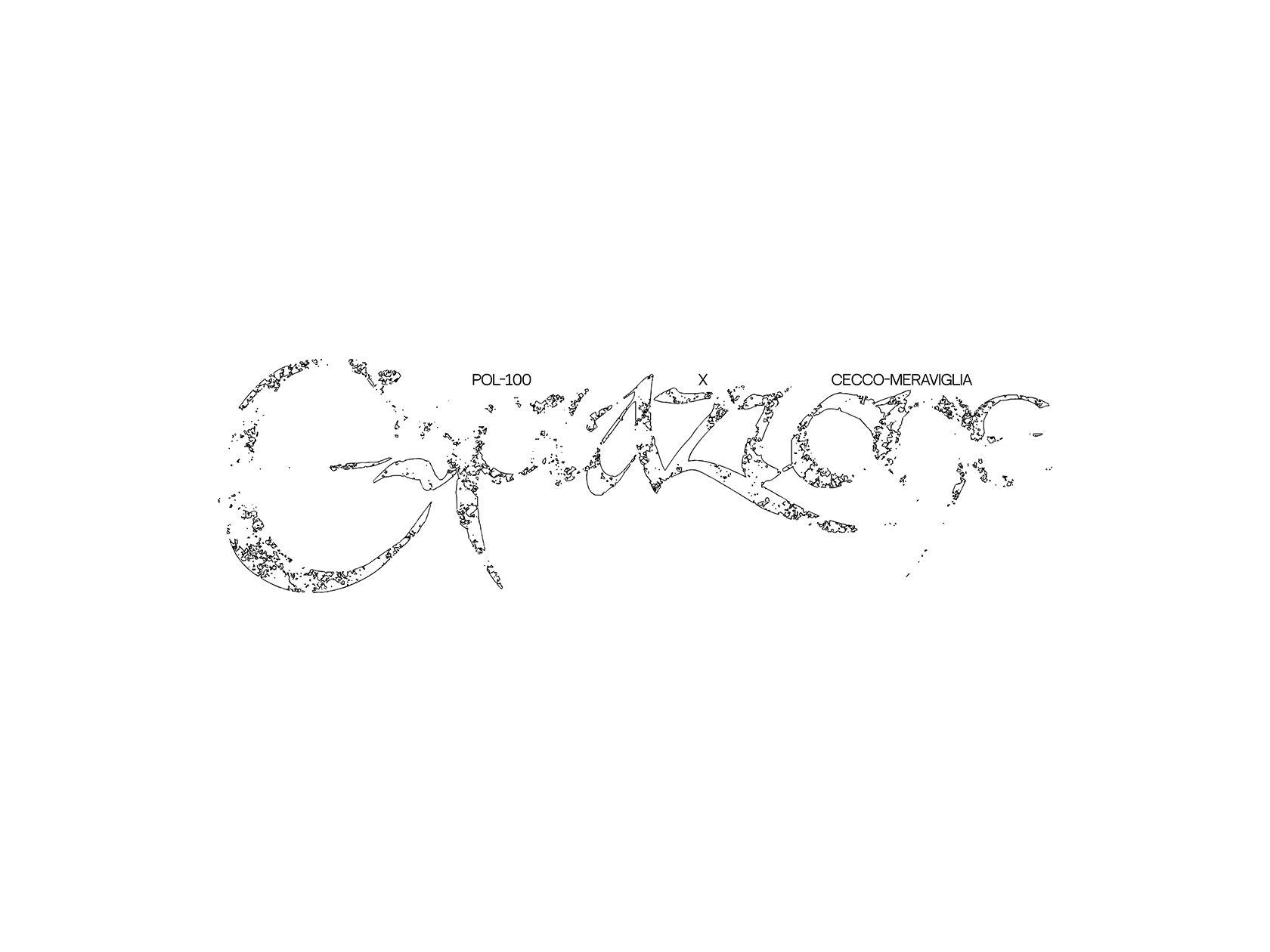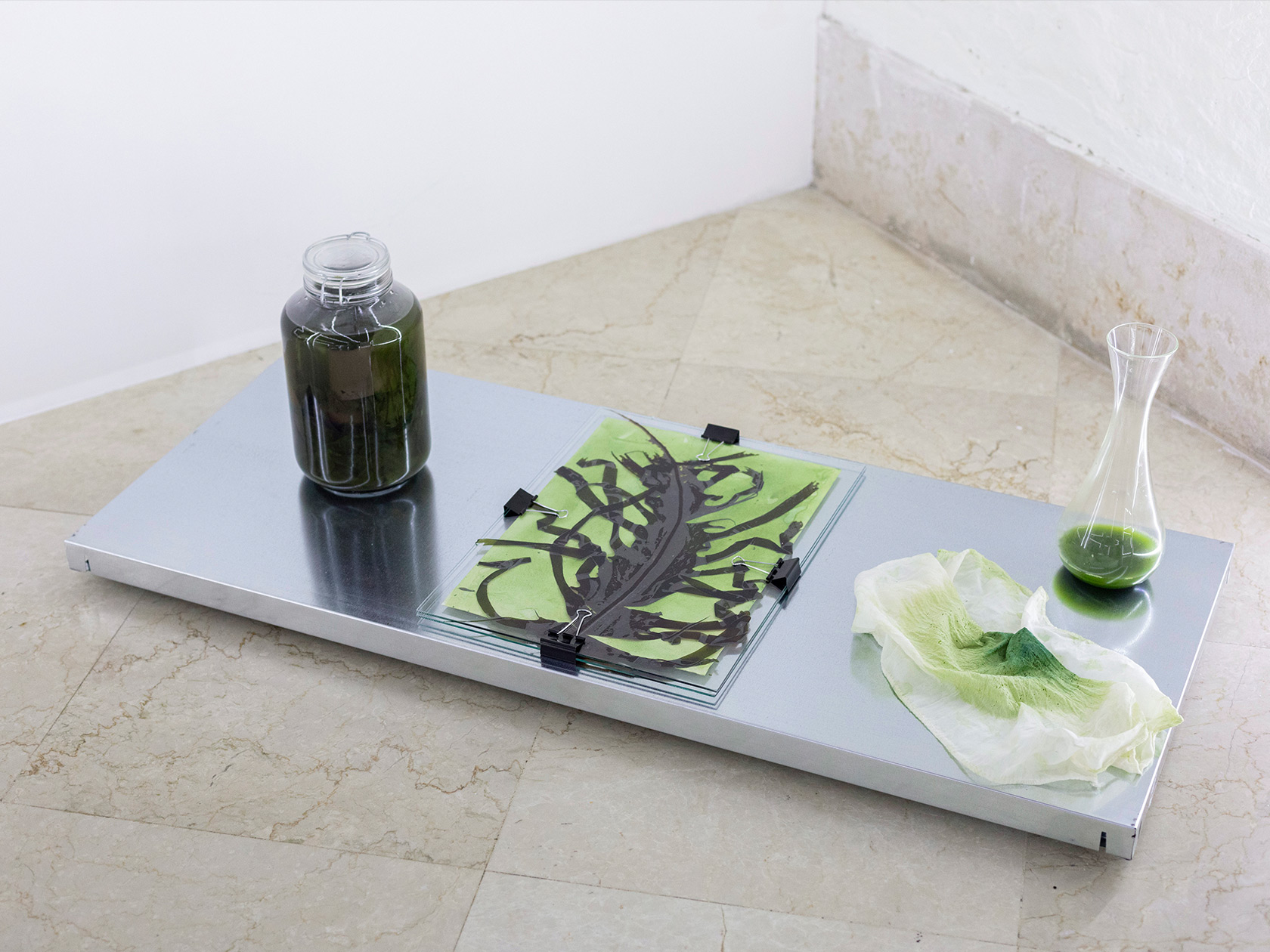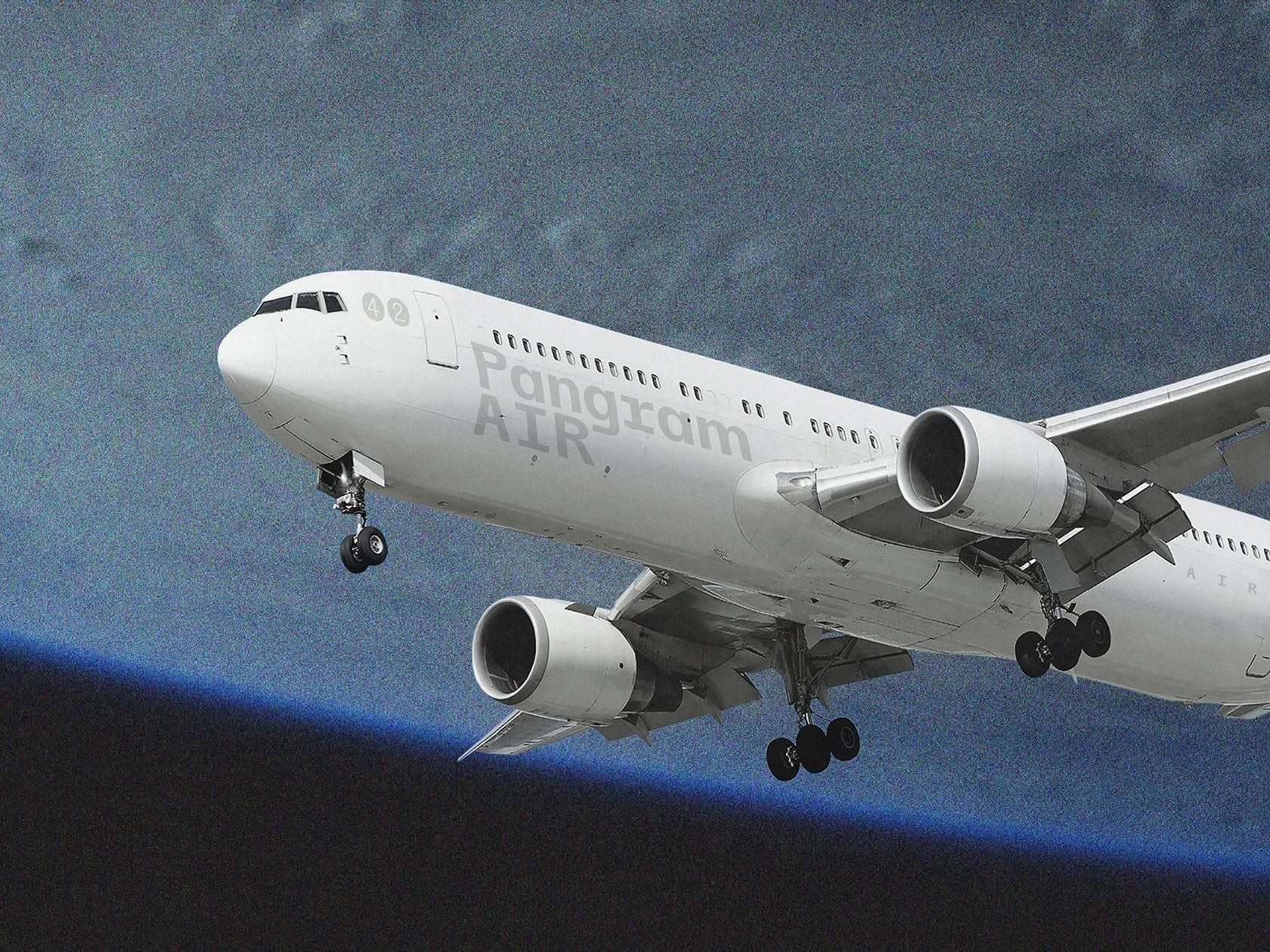Technology has taken over most working processes these days, turning hand-drawn sketches to digitalized illustrations, analogue photographies to high resolution images and real-life objects into reality-like renderings. In these digitalized times, the collaboration between Aleksandrs Breže and Andris Eglītis comes as a surprise. Turning the usual working process upside down, the duo came up with the idea to repaint a rendered poster and blur the line between nature and technology. “Andris is actually related to me in a way so he asked me to create the visuals for his art festival and I decided that it’s a great opportunity to collaborate with him so instead of asking for payment, I asked if he could repaint the Poster that I rendered”, Aleksandrs tells Collide24 about the early beginnings of their collaboration, “Great deal for me since this sort of experiment has been in the back of my mind for a while and I suck at painting.” The outcome of this experiment is a mystical exploration of wilderness and nature, a back and forth between nature and technology.

The digital poster of Aleksandrs was originally created for Savvala, an art festival taking place in the Latvian wilderness in July this year. At the event, the artworks of different artists were presented alongside a trail in wild, untamed nature. “For some of the works, you had to be knees deep in water to get close to so it was definitely a unique experience that leaves you wet, hungry and with scratches”, Aleksandrs remembers, “I wanted to depict this in the poster, some sort of a wild place where shit is falling from all sides and unfamiliar objects are invading the space.”
To achieve this result, the final artwork was put together by combining some nature scans, 3D modeling and typography. The nature scans originate from the real location of the event, showing a fallen tree trunk in the forest. After processing the scan in Zbrush, he began sculpting the mercury-textured objects in the front of the poster and added the typography that he drew on paper before.
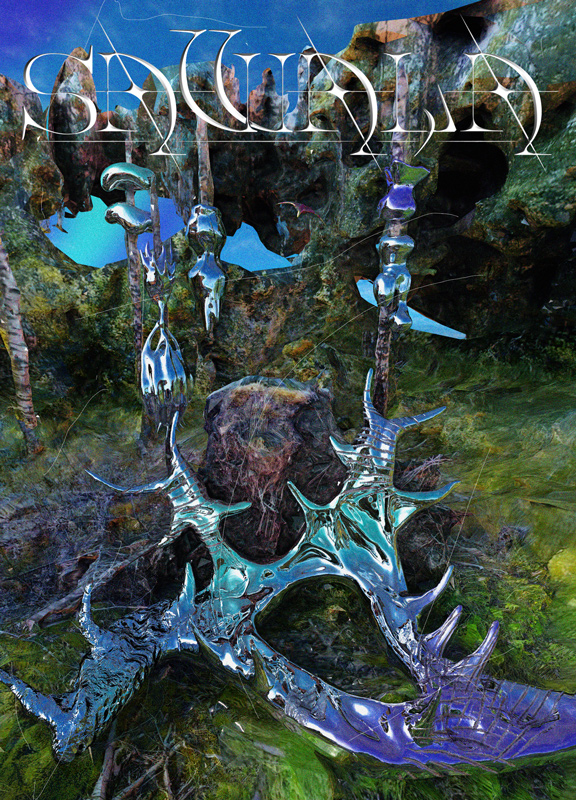
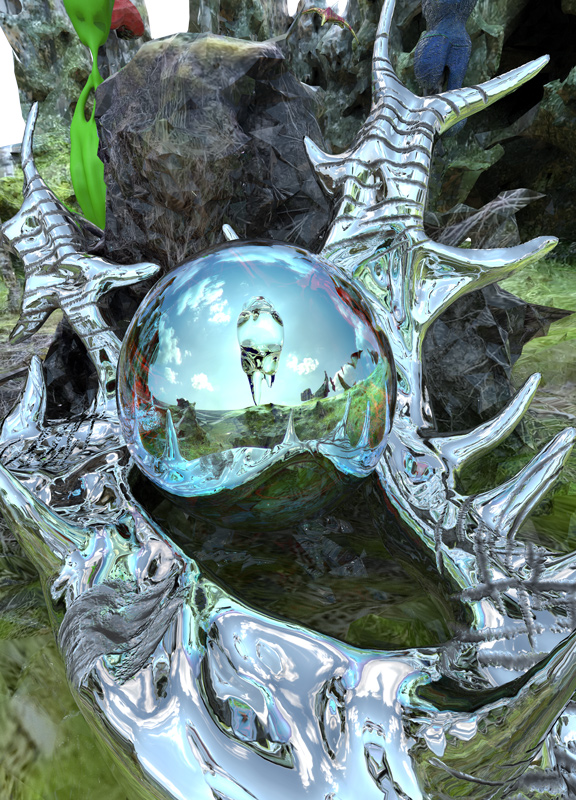
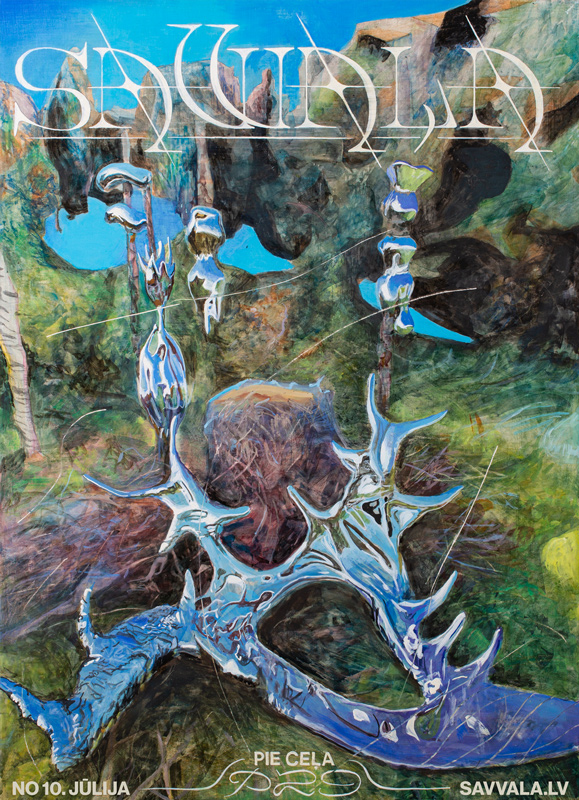
The printed version of the poster served as the reference for Andris’s painting later on which took two to three days in the making. The Riga based artist and painter primarily focuses on the concept of space in his work, manifesting itself in paintings, architecture and huge installations. His works has been presented at various festivals, exhibitions and art fairs, like the International Art Exhibition of La Biennale di Venezia (Italy), the Ppo/off/art gallery in Moscow (Russia) or the Kochi-Muziris biennale in Kochi (India).
The principle of connecting nature and technology even reveals itself in Andris’s choice of the paint, using homemade tempera paint by mixing pigments with the egg yolk of his countryside chicken. “It was really a ride to get to the outcome”, Aleksandrs reflects, “Andris painted the piece on a wooden board which is now hanging on my living room wall. So you can see how there are different parts of nature and technology kind of mixing with each other and creating a rather unique process. One could say that the chicken was a part of the collaboration.”
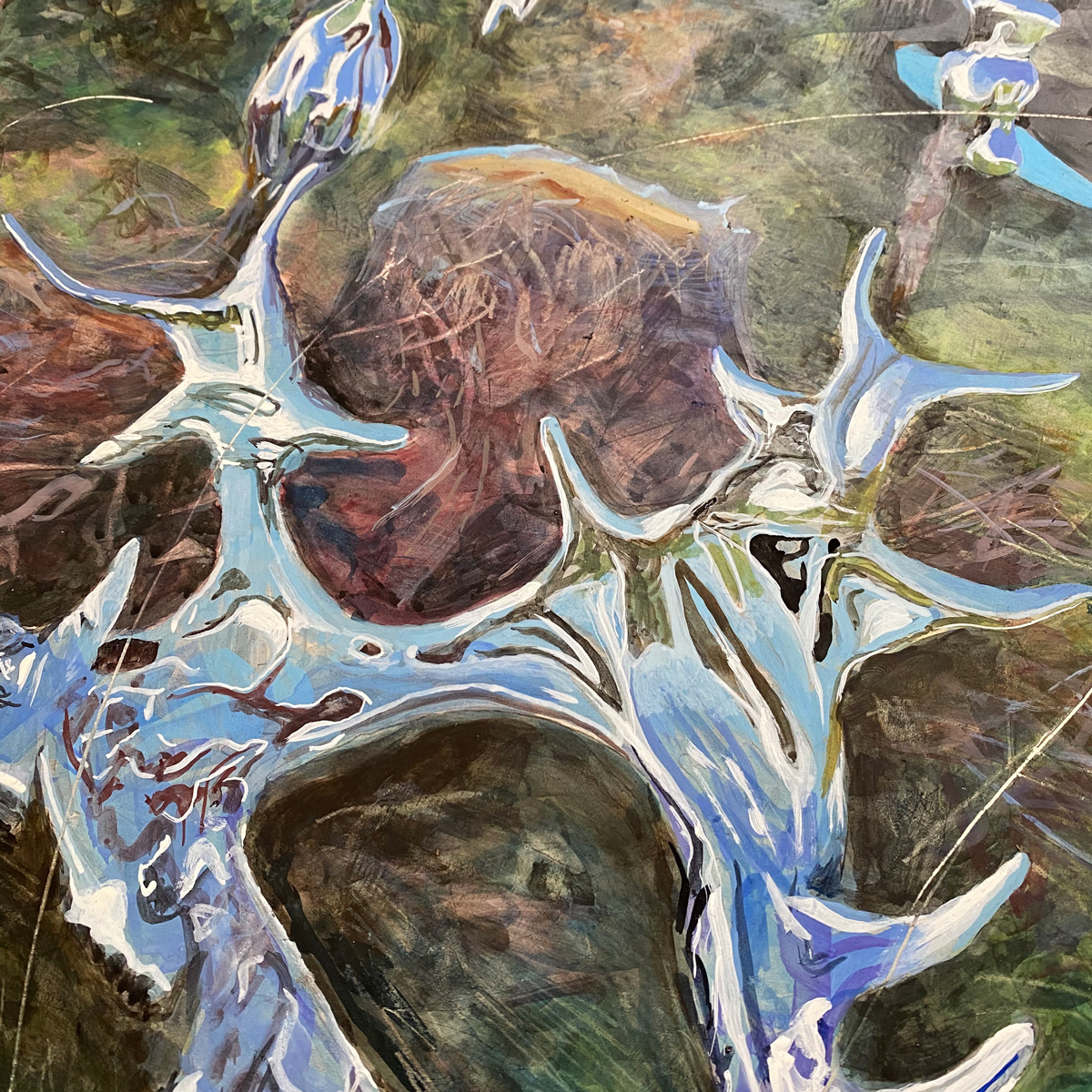
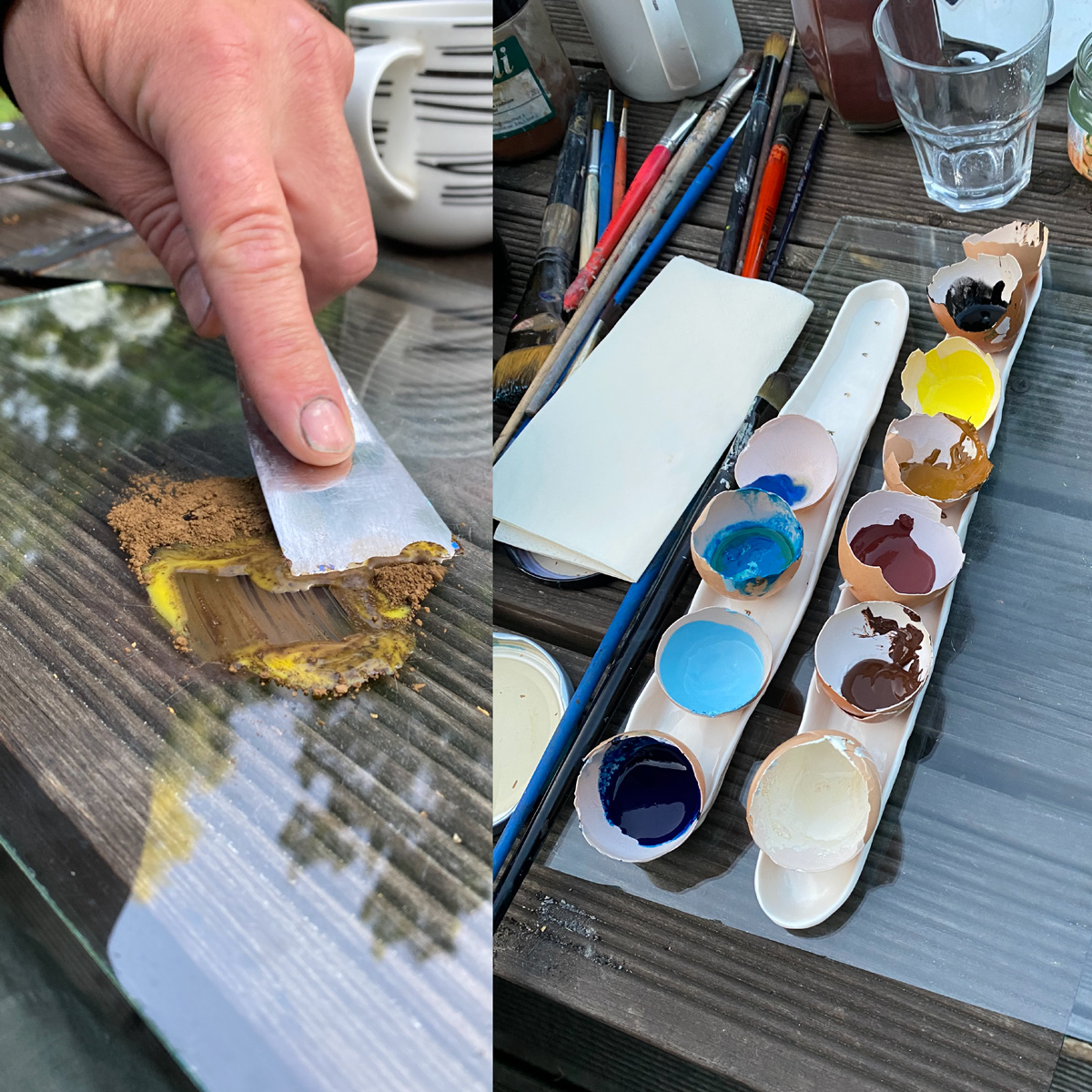
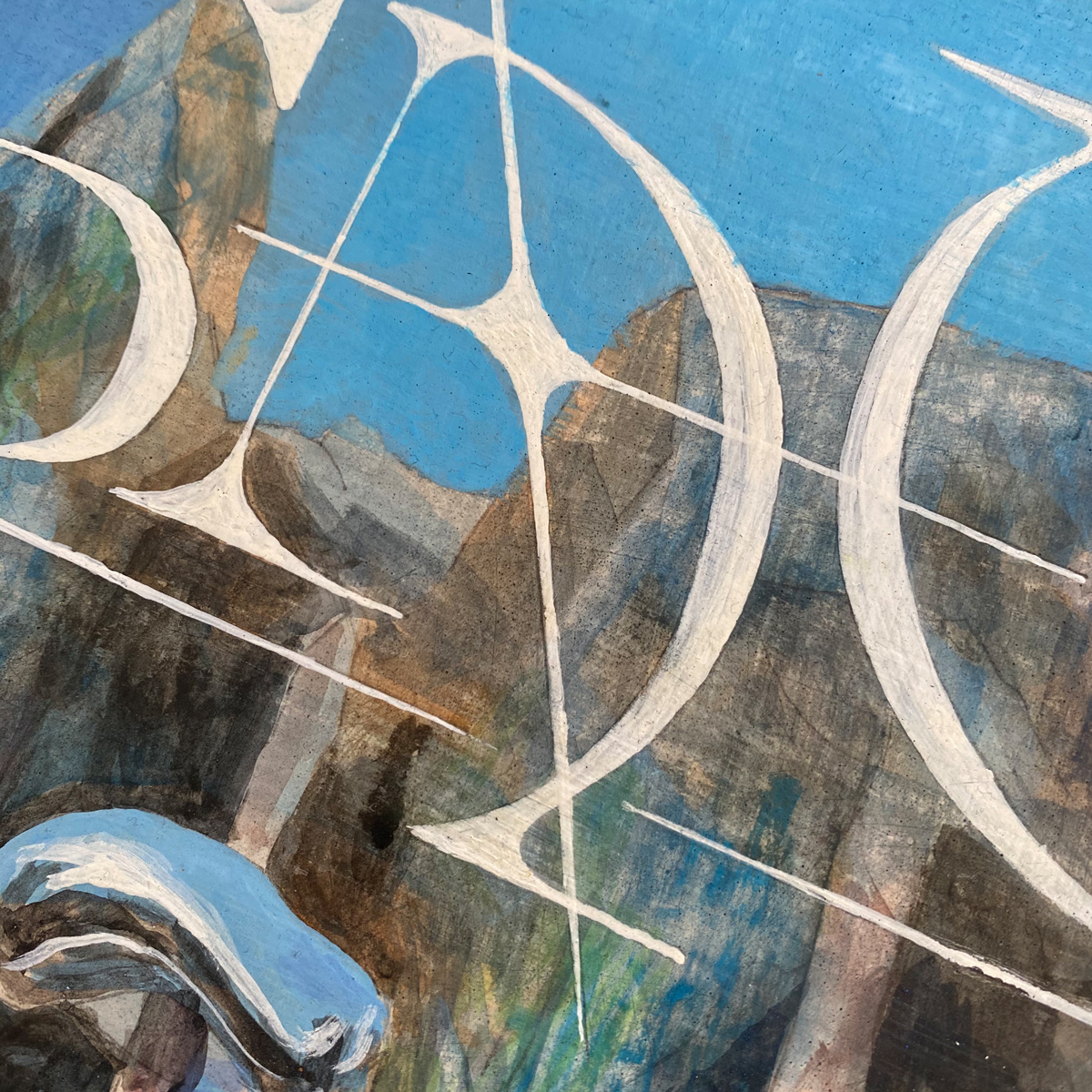
While for some people, nature and technology are different spheres that cannot be connected to each other in any way, Aleksandrs clearly sees the intertwining relation between them. “I think that’s really different for each and every one of us. For a sceptic like my father, there is no correlation, and those are two absolutely unrelated worlds which at best attempt don’t come close to one another”, he explains, “For me they are more intertwined since I see that most of the inspiration still comes from real things and shapes of nature. You could say that it’s all the same – we are all just atoms vibrating in time and space.”
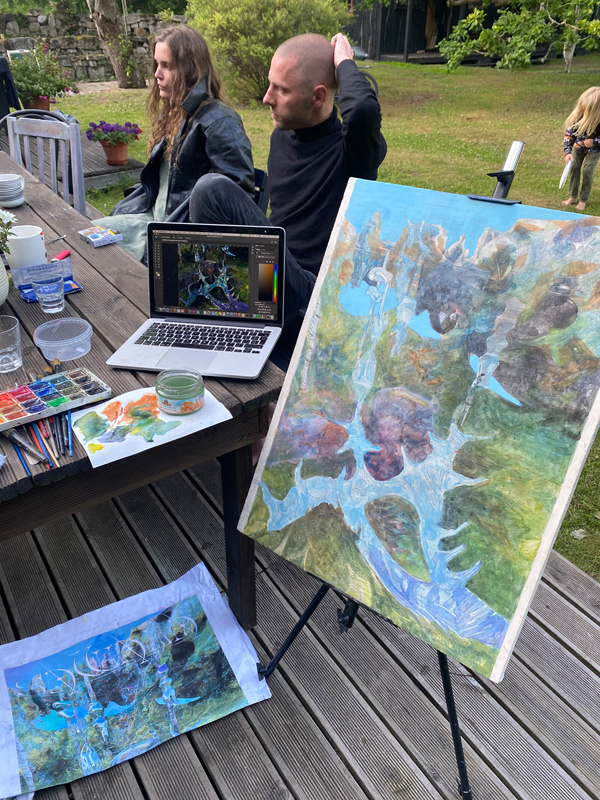
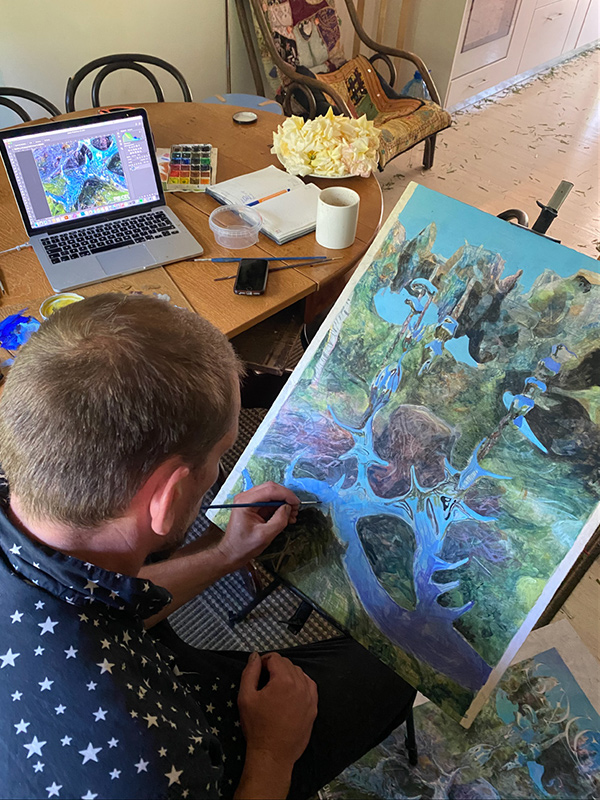
Switching from Mac to PC and getting more and more into 3D art and CGI has been a turning point in Aleksandrs career so far, “changing his aesthetics a lot”. Before moving to Estonia and starting his master at the Estonian Academy of Art, the designer graduated at the Gerrit Rietveld Academy in Amsterdam about two years ago. “Rietveld completely changed my perspective that design can potentially be so much more than I realized before”, he states. Next to his studies and self-initiated projects, he started freelancing on the side. Like many creatives, his first steps into the design world were taken within the graffiti scene which still influences his (typo)graphic style until today. “Coming from a post-soviet country, MTV was definitely a trip. I also spent hours in front of Cartoon Network as a kid. I’m sure that has all played a role in my aesthetics”, Aleksandrs says about his early influences, “I also got sent to a Christian boarding school in England when I was 14 which was more like a prison. Being forced to sing ‘Shine Jesus Shine’ 3 times a week definitely left a mark that can’t be removed.”
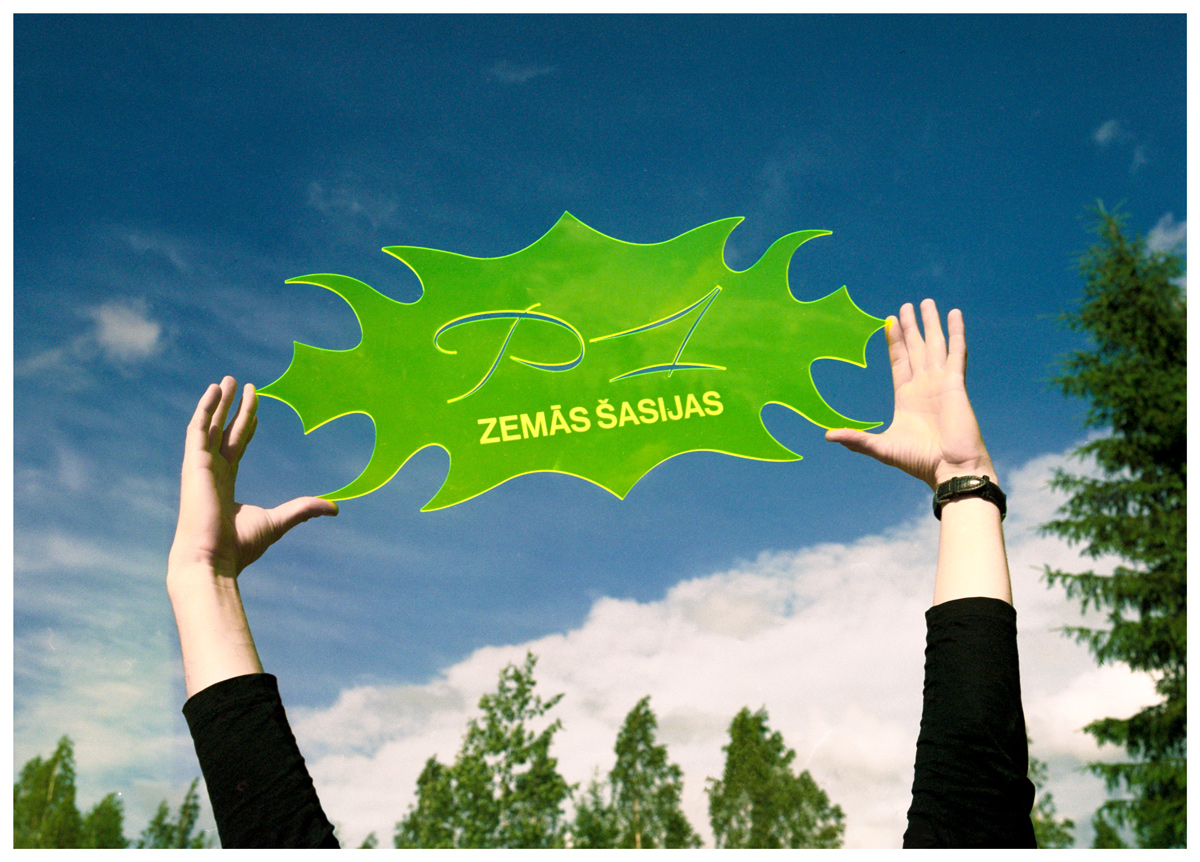
Although the project with Andris has turned out really fruitful, collaboration in general is not a practice that comes easy to Aleksandrs. “I always want to collaborate but to be honest it’s really hard for me to work with others. If there is someone else involved in the theoretical side of the design process I always find it hard to come to an outcome unless I really bite my teeth and let some things slip”, he explains, “Im not saying that my way is the right way but I’m just used to some tricks. But this is also where collaboration is beneficial because it forces you to explore different things and go down new paths you wouldn’t have otherwise chosen.”
For the next couple of months, Aleksandrs plans to focus more on his studies and immerse himself in experimentation. “I definitely see how this project has broadened my design process and has definitely inspired me to do more weird shit in the future.”

